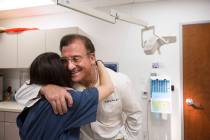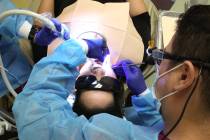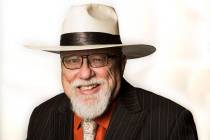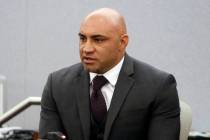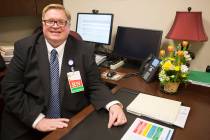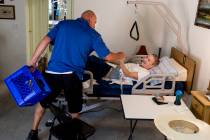Doctors’ scrawling prompts fed action
I remember it like it was yesterday -- doctors sent to penmanship school in an effort to cut down on medical mistakes made because of illegible handwriting.
The year was 2001 and the physicians, all affiliated with the famed Texas Medical Center in Houston and some of them world leaders in cardiovascular and cancer care, were ordered by the instructor to stand up and draw an "A" in the air just as she was. Other letters got the same treatment before the doctors were told to sit down and try it on paper.
And then the teacher showed them how to connect the letters.
The penmanship school was prompted by a report issued the year before by the Institute of Medicine, a document that concluded around 98,000 people a year die of medical mistakes, many dying because pharmacists misread doctors' scrawls and handed out the wrong medicine. There were other instances in which patients had the wrong limbs amputated because of poorly written orders.
I was then managing communications for the St. Luke's Episcopal Health System. Fortunately, none of the horrific accidents due to scrawls had occurred at St. Luke's, but our executives wanted to show we were trying to be proactive in trying to prevent such calamities. Journalists reported the story of doctors reliving the third grade.
I knew that the handwriting of one Houston doctor was a problem. After a visit to my internist and delivery of a prescription to Walgreens, I ended up with birth control pills.
It was lousy handwriting, according to many doctors, including hand surgeon Dr. Andrew Bronstein of Las Vegas, that has prompted the government to urge doctors to change to electronic health records.
"You can't get an electronic system without a prescribing module on it," Bronstein said as he sat in his Summerlin office.
What that means is that physicians can type a prescription on a computer and send it by email to a pharmacy. Before the prescription is ever sent, the doctor pulls up a patient's record on his computer, seeing what drugs the patient is taking and whether there could be a bad drug interaction.
The switch to an electronic system, with many vendors trying to sell a practitioner a framework costing as much as $70,000, isn't always smooth for physicians.
Bronstein invested in one a couple of years ago, only to have the company go out of business.
"I couldn't use anything they left," he said.
Then officials from a new company, which bought out the business that initially dealt with Bronstein, turned up at his doorstep. They offered to give him a minimal discount on the exact software in which he had earlier invested.
Bronstein decided to look elsewhere.
Today, he's a satisfied client of Practice Fusion, the fastest-growing electronic health record provider in the country. The Web-based system is offered free to physicians; more than 100,000 use it. It's paid for by ads that are part of a system that has all the privacy safeguards used in the nation's electronic banking industry.
Only a single ad is displayed on the screen at a time.
In a telephone interview, Dr. Robert Rowley, the California-based medical director of Practice Fusion and the man who developed the system, said it isn't strange that profit can be made from a Web-based service offered for free.
"How much do you pay to use Google or Facebook?" he said.
Even though doctors and hospitals are increasingly going digital, the nation's Bipartisan Policy Center noted recently that there's been little progress in getting their computer systems to talk with one another. So doctors can't get access, say, to information on a new patient, including relevant aspects of his history. That means paper records spread out across doctors' offices and hospitals have to be accessed, meaning lengthy delays for information are common.
It's just a matter of time, Bronstein said, before "the medical community figures out it makes no sense to stay in the 1960s."
Until the time when he can coordinate electronically with other doctors and hospitals on issues regarding his patients, Bronstein is using Practice Fusion to easily access his patients' records, no matter where he is. He can use a smartphone or a hotel computer to get valuable information.
Bronstein marvels at how things have changed. But he made one thing clear:
"I never had bad penmanship on prescriptions. I learned in drafting class to make block letters that could easily be read."
Paul Harasim is the medical reporter for the Las Vegas Review-Journal. His column appears Mondays. Harasim can be reached at pharasim@reviewjournal.com or 702-387-2908.








